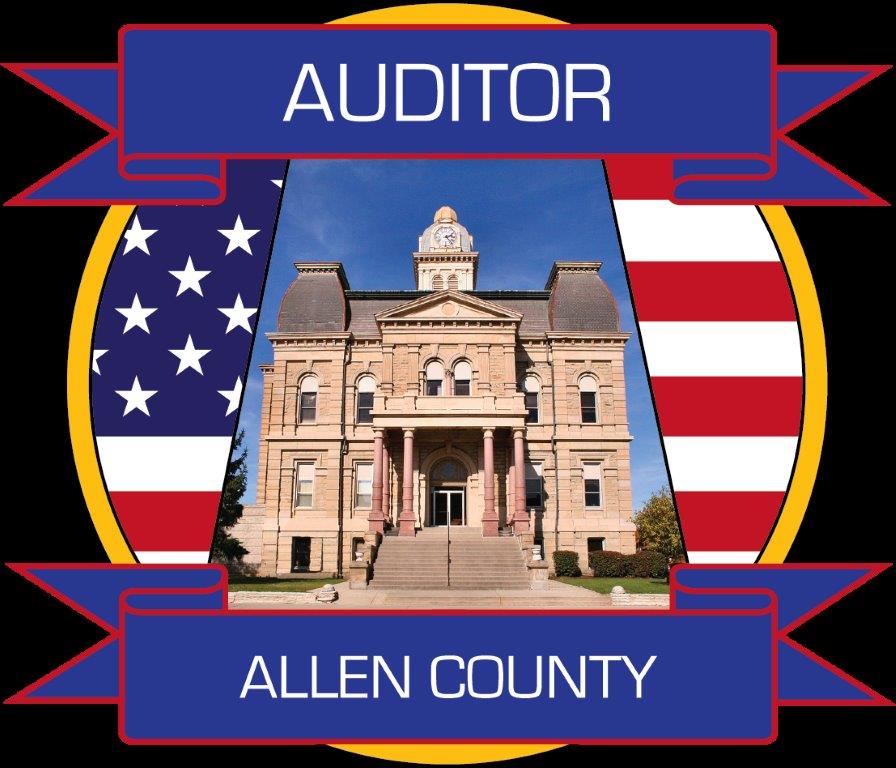Calculating Real Estate Taxes
Definitions of Terms
- Mill:
A Mill is a unit of measure, 1/1,000. In relation to real estate taxes, a mill is $1.00 in taxes for every $1,000 of assessed value.
- Taxable Value:
In Ohio, the assessed value of real estate is 35% of the property’s estimated market value.
- Fair Market Value:
The sale price of real estate as agreed upon between a willing buyer and a willing seller, with neither being under any duress to either buy or sell.
Overview of the Process
Taxes are based on the parcel’s market value and the levies passed by the voters. After the market value is established by the Auditor, a final Abstract of Values must be submitted to the state for approval. Upon approval, the state issues the new tax rates for the next tax year based upon the new values, levies voted on by the taxpayers, and the non-voted 10 mills. If property values increase, the state makes adjustments called “reduction factors” which prevents the levies from generating more revenue than what was voted into law.
After the final market value is established the individual real estate parcels are then taxed on 35% of the market value. This 35% is called the assessed or taxable value. The assessed value is multiplied by the tax rate for your school district. The “reduction factor” for your taxing district subtracts the excess that would have been generated over and above the allowable millage.
Most residential parcels also qualify for the 10% rollback on taxes based on legislation enacted in 1971. This rollback does not apply to commercial or industrial properties.
Residential parcels where the home is owner-occupied may also qualify for a 2.5% reduction in taxes on their dwelling, up to a one acre home site.
The millage generated by the county is applied to the general fund, Children’s Services, Allen County Department of Disabilities, Senior Citizens, Tri-County Mental Health, and the Metropolitan Park District. Revenue generated from levies for various Townships, Municipalities, and Schools are appropriately distributed as well.
A property could be subject to foreclosure if taxes are not paid within one year from the date the taxes are due. The Treasurer’s Office can offer payment plans to help a homeowner pay delinquent taxes and avoid foreclosure. Please visit the Treasurer’s website for additional information or contact the Treasurer’s Office directly at 419-223-8515.
View tax rate information.
View information about levies & what levies exist in Allen County.
How are Real Estate Taxes Calculated?
- Determine the assessed value:
- Formula: (Appraised Value) x 35% = Assessed Value
- Example: $100,000 x .35 = $35,000
- Calculate the gross tax:
- Formula: (Assessed Value x (Full Rate/1000) = Gross Tax
- Example: $35,000 x 56.20 / 1,000 = $1,967.00
- Calculate the reduction factor credit amount:
- Formula: (Gross Tax) x (Reduction Factor/1000) = Credit
- Example: $1,967x .188306 = $370.4
- Reduce the gross tax by the reduction factor credit amount:
- Formula: (Gross Tax) – (Reduction Factor Credit) = Adjusted Tax
- Example: $1,967-$370.40 = $1,596.60
- Calculate the rollback credit amount:
- Formula: (Adjusted Tax) x (Rollback) = 10% Rollback Reduction
- Example: $1,596.60 * 10% = $159.66
- For “Owner-Occupied” Residential Properties, there is an additional 2.5% Rollback:
- Formula: (Adjusted Tax) x (Rollback) = 2.5% Rollback Reduction
- Example: $1,596.60 * 2.5% = 39.92
- Reduce Adjusted Tax by Total Rollback:
- Formula: (10% Rollback) + (2.5% Rollback) = Total Rollback Reduction (Adjusted Tax Amount) – (Total Rollback Reduction) = Total Half-Year Tax Amount.
- Example: $159.66 + $39.92 = $199.58 $1,596.60 – $199.58 = $1,397.03 Half Year Tax Amount: $698.51 (Billed Semi-Annually) Full Year Tax Amount: $1,397.03
When Are Market Values Changed
The Auditor changes property values every 3 years, either during a reappraisal or triennial update. During the reappraisal, each parcel is visited to ensure that the record of the property is accurate. The value of the property is then established by comparable sales. The triennial update adjusts values based on sales only. Properties are not visited during the update cycle. Values will change outside of the 3 year cycle for new construction, demolition, or the result of a Board of Revision Hearing.
How Much Will My Taxes be Lowered if My Value is Lowered in the Update?
A common misconception is that all values will be lowered by 30% during the next update and taxes will be reduced by 30%. This, however, is not true. Sales are reviewed and any necessary adjustments are made. Please be aware that even if the parcel value decreases, your taxes might not be lowered.
Tax rates for emergency levies for school districts and bond retirement rates are adjusted each year to generate a set level of revenue. As values increase, the tax rates for these levies are often adjusted downward. The reverse is also true. As values decline in a district, these tax rates are adjusted upward in order to generate a specific amount of revenue.
The second reason taxes may not be reduced is because the State Tax Commissioner recalculates what are called “reduction factors” for the voted tax levies each year. This legislation was passed in the 1970s to prevent taxing entities from receiving windfalls from rapidly rising property values. On most voted levies, if property values go up, the effective taxing rate goes down to keep revenue constant. In today’s market, with values declining in some areas, that same provision can increase the effective millage rates so that the taxing entity does not incur a shortfall. As property values decline, the effective tax rates will increase in order to keep revenue constant.
However, there is a limit. Effective millage cannot be increased to more than the original millage set by voters. So a taxing entity cannot compensate for lost revenue without enacting new taxes or budget cuts.
Read a newspaper article by Joe Testa, former Franklin County Auditor, explaining values and taxes.
